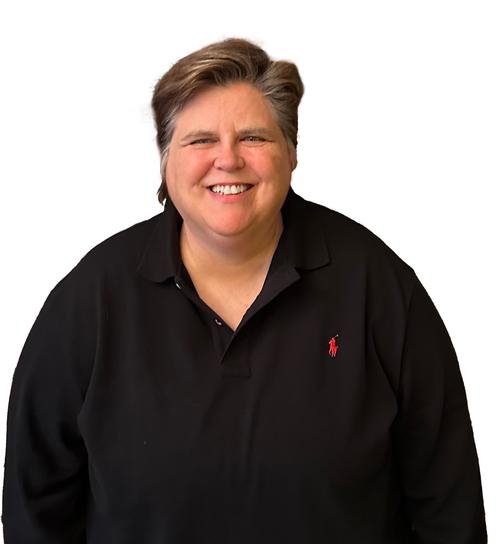
In honor of Women's History Month, LOVE LAW FIRM salutes inspiring female entpreneurs of the past. We stand on their shoulders.
Mary Katherine Goddard
Mary Katherine Goddard was born in 1738. After her father died, she got her start as a printer when she and her mother moved to Rhode Island to work in her brother's printing shop. They were in charge of editing and publishing the Providence Gazette until 1768.
Ms. Goddard's brother had a printing office in Philadelphia, and Ms. Goddard and her mother sold their small business in Rhode Island to follow him there. She helped publish the Pennsylvania Chronicle until 1773. After William moved to Baltimore, Ms. Goddard had the chance to run the business all by herself. It was one of the largest printing offices in the colonies.
When she sold the shop in 1774, Mary Katherine Goddard moved to Baltimore to run her brother's printing business and newspaper. The newspaper was the first in Baltimore at the time.
The previous publications that Ms. Goddard published were under her brother's name, and Mary Katherine was never acknowledged as the editor and the publisher. In 1775, the truth came to be known when the company's emblem contained the name "Published by M.K. Goddard."
In 1775, Mary Katherine may have been the first woman to become a postmaster in the colonies. The authorities wanted to remove her from this post because the job would entail traveling to the postal system in the South, and they believed that this would be too difficult for a woman to handle. Although she had support from more than 200 businessmen in Baltimore, Ms. Goddard was forced to leave her job as postmaster, so she moved on to run the book store that she started previously until 1809 or 1810.
During the Revolutionary War, the only paper that was in business at the time was M.K. Goddard's newspaper. In 1777, the Second Continental Congress agreed to have the Declaration of Independence distributed to the population. Ms. Goddard eagerly agreed to use her printing press for this job and was among the first to do so. This was a very brave thing for her to do because the British considered the Declaration of Independence to be a treasonous document. The copy that Ms. Goddard printed was the second to be printed, but it was the first that had all of the names of the signatories.
In 1784, William forced Mary Katherine out of her publisher's job, but she answered this by putting out an almanac that year that contained her name. Mary Katherine Goddard died in 1816 at the age of 78.
Madam C.J. Walker
Sarah Breedlove was born on the cotton plantation where her parents were enslaved, but she was their first child born after the Emancipation Proclamation. By the time she was seven, both her parents were dead, and she felt compelled to marry Moses McWilliam so that she could run away from her abusive brother-in-law. After her husband died when she was 20 years old, she took her daughter and moved to St. Louis, Missouri.
Sarah's brothers were in St. Louis working as barbers, and she began to learn about hair care from them. She also worked for Annie Malone, a hair care company that would be Madam C.J. Walker's largest competitor.
During the time that she was also working as a washerwoman in St. Louis, she took hair products that were on the market and set out to find a formula that would cure scalp infections. During this time, Sarah Breedlove was suffering from severe dandruff as many Black women were at that time. Very few people had running water in their homes, so keeping their hair clean was a challenge. She was fortunate after she moved to Denver in 1905 to begin working for a pharmacist. This pharmacist taught her the chemistry that she needed to create an ointment that would heal dandruff.
After she married Charles Joseph Walker, Sarah Breedlove became "Madam C.J. Walker" and began to have success with hair care products that were known as the "Walker Method" and the "Walker System of Beauty Culture."
In 1906, Madam C.J. Walker and her husband traveled throughout the South and the eastern states to train saleswomen as "beauty culturists." In 1908, Ms. Walker opened her first startup and called it the "Lelia College of Beauty Culture" after she and her husband settled in Pittsburgh, Pennsylvania. Because Indianapolis had a vibrant Black business community, Ms. Walker became the founder of the startup "Madam C.J. Walker Manufacturing Company" and moved it to that city in 1910.
The opportunities that Ms. Walker brought to many Black women across the United States saved them from taking jobs as farmhands, laundresses, cooks and maids. She became an international enterpreneur when she took her business outside of the United States in 1913 and traveled to Central America and the Caribbean. In 1919, 25,000 women were sales agents for Ms. Walker's products.
Ms. Walker understood the importance of branding, so every tin can carrying her products had her picture. The women selling her products traveled door-to-door in black skirts, white shirts and with a black satchel in their hands. The products showed up in several Black newspapers and magazines across the country while Madam C.J. Walker continued to travel all over the United States.
Olive Ann Beech
Olive Ann Beech held several high positions in business when she became an enterpreneur. She served as a secretary-treasurer in 1932, president in 1950 and chairman of the board in 1950. Along with her husband, she was a founder of Beech Aircraft Corporation.
Ms. Beech went to secretarial and business school where she learned the arts of bookkeeping and stenography. In 1924, she went to work at the Travel Air Manufacturing Company and met one of the owners. Walter Beech was the owner that she met, and because of that, Olive Ann became Mrs. Beech in 1930.
After leaving Travel Air, Olive Ann and Walter opened a small business that they called "Beech Aircraft Company." This was when Olive Ann had the opportunity to become the secretary-treasurer and run the business so that her husband could concentrate on designing and selling airplanes. In 1936, she became a member of the company's board of directors.
Ms. Beech also promoted female pilots. It was her idea for Louise Thaden to enter to compete in the Bendix Transcontinental Air Race, and she did this in a Beechcraft Staggerwing. The Staggerwing was just one in a series of fast and expensive airplanes that the company was producing for their business market. When Ms. Thaden won the coast-to-coast race, Beech Aircraft Company received well-deserved publicity.
World War II gave Beech Aircraft Company a chance to expand, and it did so by converting its aircraft into models that the military could use. This required that Ms. Beech obtain financing to expand the plant. She did this while she was forced to take the reins of control at the company after Mr. Beech was hospitalized with encephalitis.
After the war was over, Beech Aircraft Company became a manufacturer of planes for the private sector again, but they still produced aircraft for the military.
Walter Beech died in 1950, and Ms. Beech took over as president and chairman of the board. While she was at the helm for the next 18 years, Beech Aircraft Company increased its number of high-performance airplanes. It also produced military aircraft, such as drones, transports and trainers. Lastly, the company worked within the space-exploration industry. She refused to become a producer of jets because she believed that the market for propeller-driven aircraft was still active.
In 1980, the Raytheon Company purchased Beech Aircraft Company, and Ms. Beech remained on the board. She finally retired in 1982.

